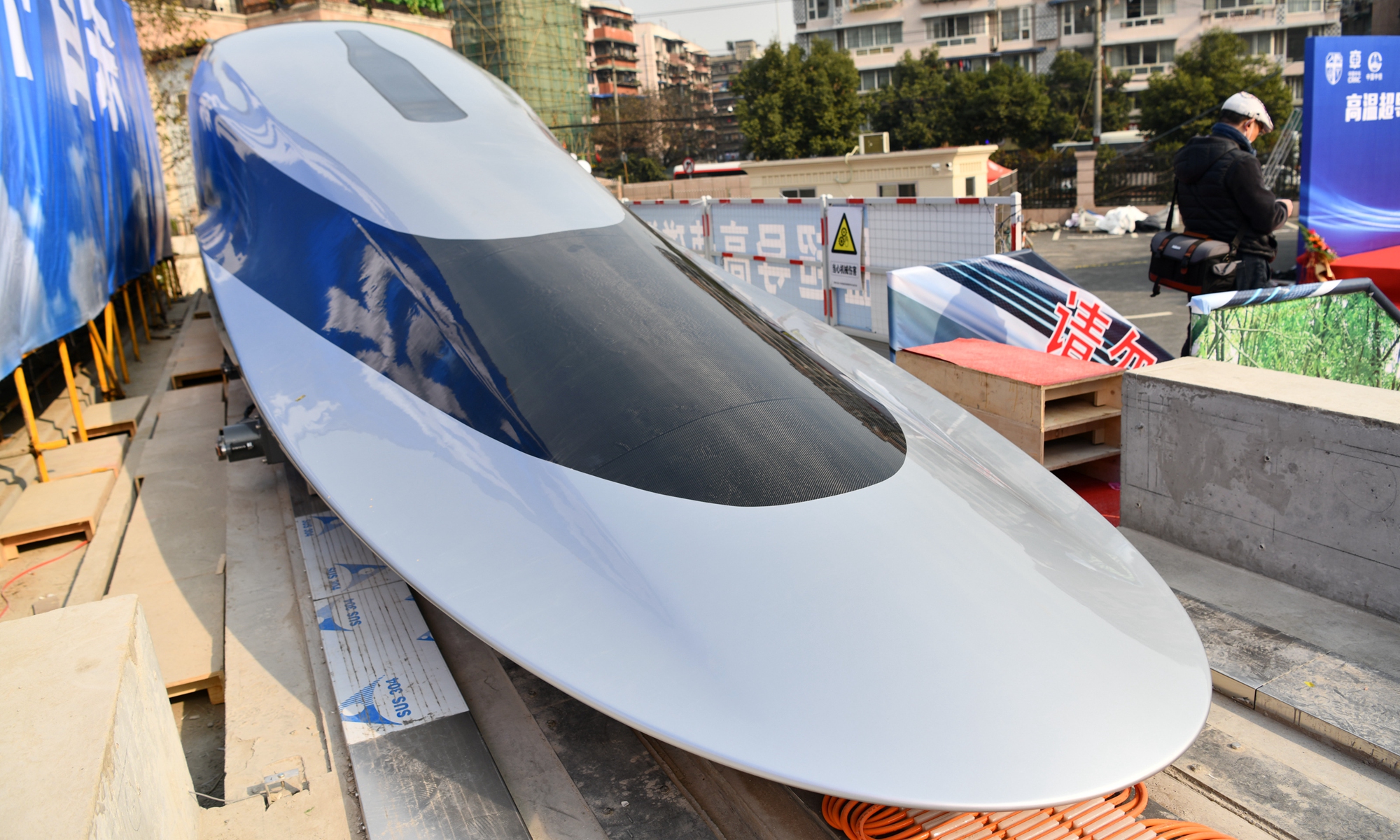
The prototype of the high-temperature superconducting maglev train Photo: IC
A prototype of a high-temperature superconducting maglev train, dubbed as a "super bullet maglev train" with a maximum speed of 620 kilometers per hour, rolled off the production line on Wednesday in Chengdu, capital of Southwest China's Sichuan Province.
The train is the first of its kind, in that it uses high-temperature superconducting maglev technology, and it was designed and manufactured in China, according to state-run Xinhua News Agency.
The completion of the engineering prototype and its testing tracks marked a "zero to one" moment in the study of high-temperature superconducting maglev technology, Xinhua said.
The high-temperature superconducting maglev is different from existing maglevs, which use low-temperature superconducting technology or normal conducting magnetic levitation, and the change will enable a steadier ride for the train.
With its all-carbon fiber lightweight body, bullet-shaped nose and heavy-haul high-temperature superconducting technology, the prototype train has a designed peak speed of 620 km per hour, likely the fastest of any vehicle on Earth, according to the Xinhua report.
Enticingly, the report said that, if combined with near-vacuum tube or tunnel technology, the train is expected to bring a subversive transformation to the rail transit sector in the future.
This is the second maglev prototype with a speed at 600 km per hour or faster from companies and academic institutions in China.
A prototype high-speed maglev test vehicle with a speed of 600 km per hour, developed by CRRC Qingdao Sifang Co, successfully ran on a test line at Tongji University in Shanghai in June 2020.
An industry insider said that since Xinhua declared that the system was the world's first high-temperature superconducting maglev train, the one from the CRRC unit could be using low-temperature superconducting technology.
The concept of superfast bullet trains originated in the US, but it is becoming a reality in China.
Sun Zhang, a railway expert and professor at Shanghai Tongji University, said there is some difference between the Chinese super bullet maglev and the ultrafast hyper-loop transport system championed by US industrialist Elon Musk.
"The Chinese trains are pragmatic while Musk's hyperloop is futuristic," Sun told the Global Times on Wednesday.
"The Chinese trains are designed for average human beings as a high-speed transportation alternative while the hyperloop is designed for travel on Mars by astronauts who have been trained to withstand forces of acceleration equivalent to many times the force of gravity."
The 600-km-per-hour train is for normal atmospheric pressure, as trains running in a vacuum tunnel could easily top that speed to a range of more than 1,000 km per hour, Sun said.
However, to put passengers inside a vacuum tube, scientists need to solve the issues of safety and cost.
Southwest Jiaotong University in Chengdu is reportedly pushing the project. The high-temperature superconducting magnetic levitation has a relative cost advantage over low-temperature superconducting technology.
China is now a world leader in developing maglev technology. At least three maglev rail routes are in the planning stage in the country to push the development of the high-speed maglev train system.
Maglev trains are viewed by many as a means to fill the speed gap betwee aviation and the country's world-beating high-speed railway system, which runs at a speed of 350 km per hour.




